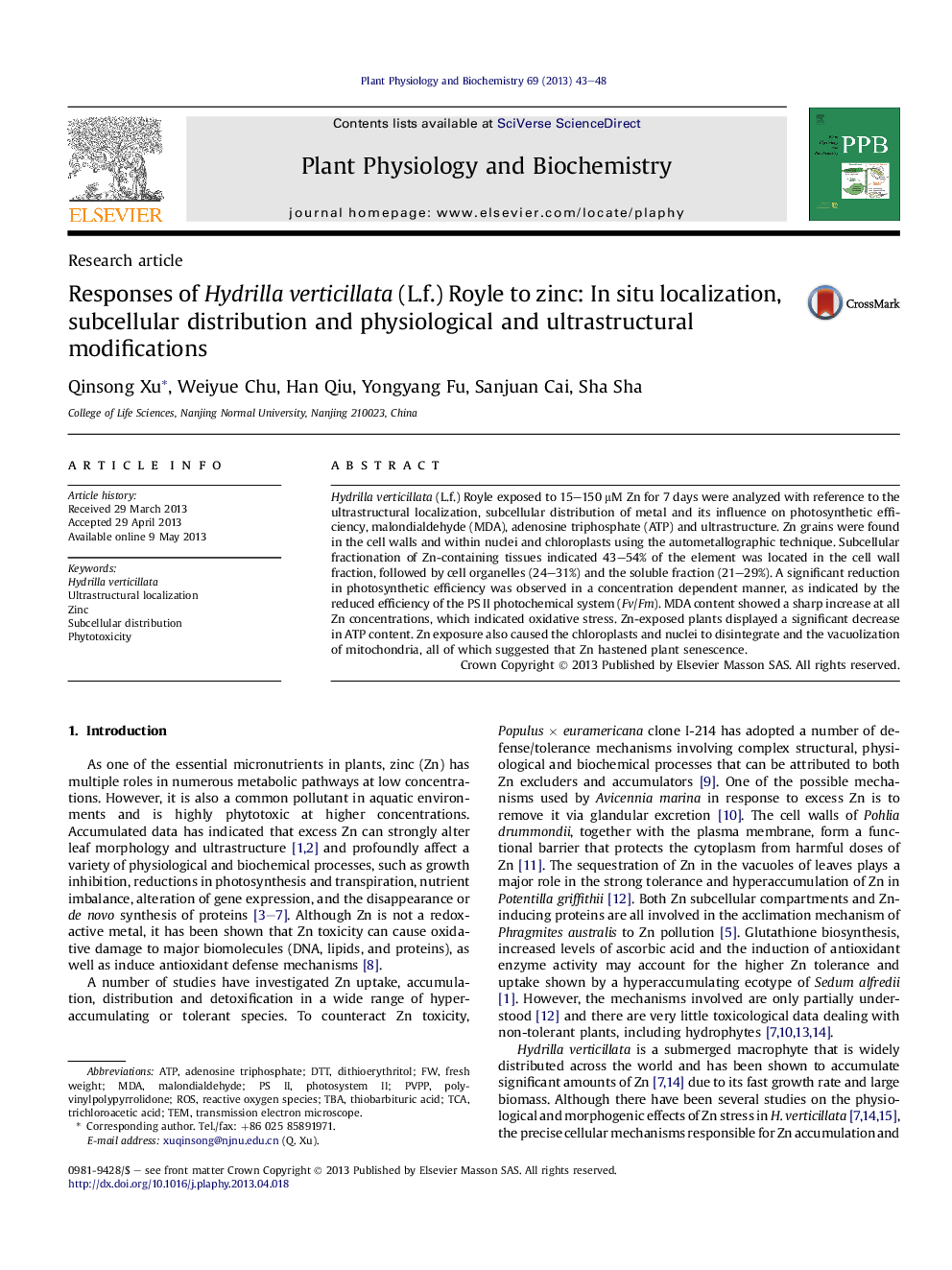| Article ID | Journal | Published Year | Pages | File Type |
|---|---|---|---|---|
| 2014873 | Plant Physiology and Biochemistry | 2013 | 6 Pages |
Abstract
Hydrilla verticillata (L.f.) Royle exposed to 15-150 μM Zn for 7 days were analyzed with reference to the ultrastructural localization, subcellular distribution of metal and its influence on photosynthetic efficiency, malondialdehyde (MDA), adenosine triphosphate (ATP) and ultrastructure. Zn grains were found in the cell walls and within nuclei and chloroplasts using the autometallographic technique. Subcellular fractionation of Zn-containing tissues indicated 43-54% of the element was located in the cell wall fraction, followed by cell organelles (24-31%) and the soluble fraction (21-29%). A significant reduction in photosynthetic efficiency was observed in a concentration dependent manner, as indicated by the reduced efficiency of the PS II photochemical system (Fv/Fm). MDA content showed a sharp increase at all Zn concentrations, which indicated oxidative stress. Zn-exposed plants displayed a significant decrease in ATP content. Zn exposure also caused the chloroplasts and nuclei to disintegrate and the vacuolization of mitochondria, all of which suggested that Zn hastened plant senescence.
Keywords
MDAPS IIdithioerythritolTBADTTTCAPVPPROSAdenosine TriphosphateATPtrichloroacetic acidThiobarbituric acidTemSubcellular distributionPhotosystem IIZincPhytotoxicitymalondialdehydeUltrastructural localizationTransmission electron microscopeHydrilla verticillatafresh weightpolyvinylpolypyrrolidoneReactive oxygen species
Related Topics
Life Sciences
Agricultural and Biological Sciences
Plant Science
Authors
Qinsong Xu, Weiyue Chu, Han Qiu, Yongyang Fu, Sanjuan Cai, Sha Sha,
